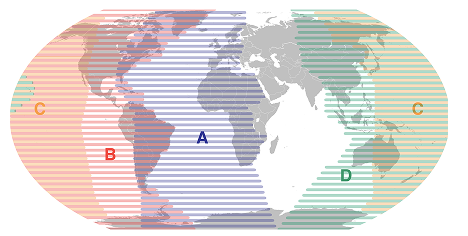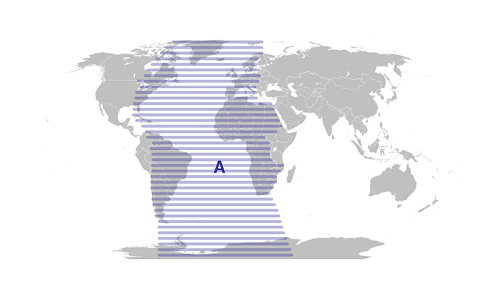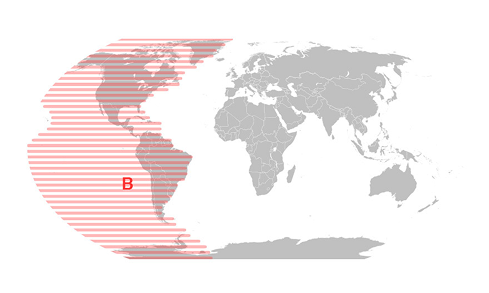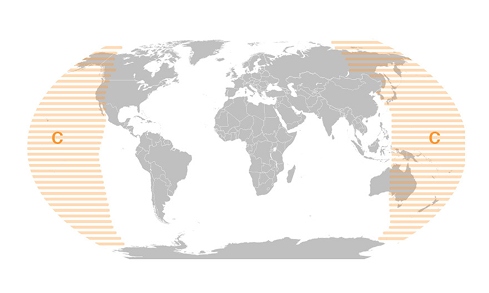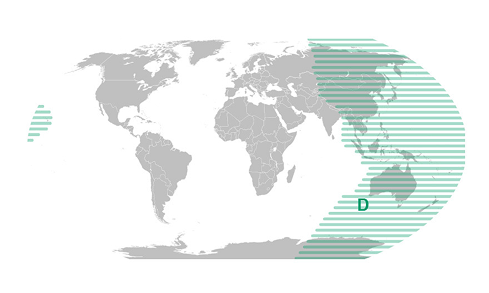Investing In Early Relational Health: The Røyken Story
This is the story of Anne Cathrine Scharning and Heidi Høgelid Mayi, two women who have been working to infuse Circle of Security Parenting into their community over many years. Anne is a family therapist and former preschool teacher whose primary career focus has been on supporting interaction and security in vulnerable families. Anne has a son and is the proud grandmother of two young grandchildren. Heidi is a clinical psychologist whose main focus has been on the perinatal period and working with young children and their families. She balances work with caring for her three children: 8, 12 and 14 years old.
Community Context
Røyken is a former municipality of about 22,000 residents located in the southern part of Norway and about 38 kilometers southwest of Oslo, Norway's capital. This is the story of a shared journey to "infuse" COSP into a small community--and to manage the inevitable twists and turns that are a part of community-based implementation. In January 2020, Røyken was merged with two neighboring municipalities, forming the larger Asker municipality. Thus, the Røyken Story is told and written by Anne and Heidi, in shared effort with Neil Boris at COS International, and with the understanding that Heidi and Anne's journey of providing COS-knowledge in communities, will go on and find new paths.
The Foundation: The Røyken Model
"The Røyken model" was a politically established guiding framework that was developed in 2009, well before Heidi and Anne started working in Røyken. Some key principles of the model were to provide early intervention, low threshold help, competent leadership, and to promote interaction and more seamless cooperation across family services in the community. Implicit in this was an aim towards all people working in these services to have a common and shared "language" and understanding of children's development and needs. Explicit features of the model including co-locating child protection, family therapeutic and mental health services alongside school and health nurses and environmental therapists. The goal was making such services both more available and more coordinated.
While the Røyken model provided a solid anchor-point, it still takes the engagement and wisdom of someone capable of "attaching the anchor" by translating these initiatives into a professional focus for family services. In Røyken there were some key leaders who had a genuine engagement in, and commitment to, children's wellbeing as well as a relational way of thinking. Torgeir Mjellekås, an experienced clinical social worker with a lot of wisdom in his professional field, a supportive and trust-based way of leading teams, and a strong and genuine engagement in the quality of children's development was one such key leader. He knew of COSP and played a key role when COSP was suggested as a model that could be a framework for family support and intervention. Fortunately, Norway has a wonderful pair of certified COSP trainers and in 2014 funds were allocated to support local providers, including Anne, to be trained in COSP. (Heidi had not yet started working in Røyken, but she was trained as a COSP facilitator in 2010 and had gained solid experience with applying the model in other jobs.)
Implementation
Anne and her colleague Hanne Marte Johansen (a child and adolescent mental health provider working in child welfare) were the first to offer a COSP group in Røyken. Within weeks of the training they had 25 parents signed up for the initial group! While they immediately learned that a more ideal group size was 8-10 parents, the response among parents was positive and it was not difficult to recruit participants for further groups. What was lacking was a roll out plan to meet demand: more facilitators were needed and funds to develop a COSP implementation plan were required.
Hanne saw an opportunity to apply for external funding with the goal of making the COSP-related work in Røyken into a defined project. Fortunately, the funds were granted and within a year Røyken had 30 registered COSP facilitators from various disciplines and agencies represented. Facilitators reached out to parents through the municipality's official website, the school web portal and directly to parents through family services. Any parent could sign up regardless of the child's age. There were separate groups during daytime for parents with babies, and the babies often joined. The afternoon groups mixed parents of children and adolescents, all ages. Facilitators always contacted all who had signed up by phone to give a brief introduction, and to get some knowledge of each parent's expectations for joining the COSP group. Based on this initial contact some parents were offered COSP individually instead of in groups. Not all facilitators ended up delivering COSP groups, but all reported that the Circle of Security was a useful and valued lens or roadmap in their daily work with families. The goal of a common understanding of children's development and needs seemed to be within reach. COSP implementation was documented in annual plans and reports of services delivered in the community. COSP was becoming an expected and valued service provided by the Røyken municipality.
By 2016, COSP parent groups were well established and 4 dedicated and skilled COSP enthusiasts-- Anne and Hanne along with family therapist Kirsti Brekke, and health nurse Laila Morland--were coordinating that work as a group. Nearly 300 parents had been given COSP either in groups or individually and the idea of introducing COS to preschool teachers and caretakers in kindergartens emerged. This was a passion that Heidi shared and when she started working in Røyken she immediately joined the work group. Besides planning and coordinating, the group served the important function of "keeping the fire burning." However, there were many dedicated COSP providers in Røyken, who all contributed by sharing experience, dedication and reflections around their work.
Integration into Educational Settings
The work of bringing COSP to other caregivers besides parents gradually started. Once again, the support of relationally oriented leaders were essential. Bente Ingjerd Nielsen, who was the leader of the special education therapists and top leader of all the kindergartens in the municipality, was introduced to COSP and quickly developed a strong interest in supporting use of COSP with kindergarten (preschool and childcare) providers. Soon, she had found funds to have all her special education therapists who served the kindergartens in Røyken take the 4-day COSP training. Bente also distributed the book "Se barnet innenfra," by Brandtzæg, Torsteinson, and Øiestad, to each kindergarten that participated. The book is a valuable tool on how to work with attachment in kindergarten; it uses the Circle of Security as a central organizing frame for this work.
By this time, Anne, Heidi and the rest of the work group had consulted with Stig Torsteison and Ida Brandtzæg and created a 3-hour presentation that focused on COSP and the importance of the quality of early relationships offered to each child. The goal was for early educators in the community to be introduced to the Circle as a map to see the child from within. At the same time, professional caregivers gained a deeper understanding of attachment theory, and the main concepts and metaphors of the COSP model.
One area of consultation that soon started was with schools. The work in local schools started when the principal asked to have the three-hour presentation for his staff after Anne had worked with school staff on managing the needs of a highly insecure boy. Anne and Heidi considered this request thoroughly. They were well aware that adopting the material in their presentation to fit and address the relational context of the classroom-- and introducing attachment theory and relational thinking as a framework for schools to meet the social needs of the children they serve-- would be a very different challenge than presenting it to kindergartens.
At the time, Norway was implementing a cross-disciplinary curriculum that included "life mastery" as one of its pillars. This focus on the schools' responsibility in supporting and preparing individuals to thrive in life is also present in leading guiding documents for kindergartens. As Anne and Heidi saw it, making the case that "life mastery" is related to the social environment of the school and the relational needs of its students, and reflecting on the implied "collective responsibility" in raising children, served as a good platform to connect with the school staff.
Transition and Future Directions
In January 2020, Røyken was merged with two neighboring municipalities, forming the larger Asker municipality. As the Røyken story and Anne and Heidi's shared journey came to an end, several hundred parents had attended COSP in groups or individually, all kindergartens except one had gained knowledge of COSP, and schools were starting to show interest. Across family services, the COSP model was a valued tool.
As with all changes and transformations, the Asker merger added insecurity, and new structures were being created. The municipality had increased greatly in size and new leaders had stepped up. The system-based approach based on COSP and relational theory was tabled for the time being. While this is unfortunate, the shift also allowed for some reflections on what factors were present in Røyken that enabled the work that was accomplished over several years.
Best Practices and Recommendations
Anne and Heidi's Advice on Community Implementation of COSP
This list is based on reflections and insights that Anne and I have shared along the way, and also after we finished our work in Røyken. We hope that the list will inspire, and that some of it may be useful to anyone who wants to introduce attachment thinking and the COS model within a community.
- We recommend that you begin by looking for key community leaders who show interest and a relational way of thinking and introduce your ideas to them. Engaging key leaders is the start of creating solid anchoring in the community.
- It is important to be familiar with leading documents and strategic plans in your community. Look for visions and goals that support your case. It may be a good idea to make a written description of the developmental work you want to do. Often it helps you sharpen your goals and it is useful in order to help you get people with influence to support your project. Make a point out of how you plan to create alignment between initiatives and efforts and reference those key documents liberally.
- Establish a work group. However, we recommend that you make sure all your colleagues have ownership in the project, that as many as possible have knowledge of COS, and that there is a "we" in the work you set out to do.
- If possible, assign a team member to research and apply for external funding for more flexibility and creativity in your work.
- Be sure to tailor your conversations, presentations and other material so that it is relevant to each entity you meet with. Preschools or kindergartens are different from primary or secondary schools. Have an initial meeting with the goal of getting to know each other. Listen to what their challenges and strengths seem to be at this particular school, for example. What are their areas of focus? Address their challenges and topics when introducing the COS model, perhaps in a second meeting. You want them to understand how the Circle of Security can provide a roadmap to enhancing relationships at all levels of their organization.
- In order to present the material you should be a COSP facilitator. It is also important to have a deep and thorough understanding of attachment theory that underlies the COSP program.
- Start engaging community members and gain some experience. Trust the model. Show and tell. Your work will evolve as you get experience doing it. Inspire others by sharing experiences and insights. Connect to where people are, and what is important to them.
- It is our experience that it is an advantage to feel secure and connected with your partner in presenting the material. Your state of mind when you present and the connection you make is part of the presentation. Over time, Anne and I became aware of how this affected the quality of what we presented. It also seemed to affect the listeners in terms of making it a safe room to share and reflect.
- Whenever you introduce someone to the COS model, you should be aware that the material you present may connect the listeners with attachment themes in their lives. As Anne and I experienced, sometimes painful reactions occur among the listeners. In a large group, you being a stranger, you may not be able to provide "hands" like you would in a smaller parental group, therefore we recommend to always talk about this when you start the presentation, and encourage the listeners to be "available" to their colleagues during the presentation and in the days to follow.
- When planning our presentation, we found that it is a good idea to support your listeners to "go all the way around the Circle" with the material. You don't want to give a lecture ending up meeting the audience only at the top of the circle. Invite your listeners to reflect on certain questions in pairs or by themselves. Be creative and plan your presentation so that in between your teaching moments, you make room for visual images, video clips and even music that illustrates for example the concept of "being with" through channels that speak more to the listener's emotions. When we had our presentations we also shared examples and stories of our own experiences whenever we thought that may clarify or add depth, or simply to show the listeners that it is ok to share your struggles. We were hoping to engage the listeners in reflection on the material along the way and we welcomed sharing, but at the same time we didn't want anyone to feel pressure to share if they weren't comfortable sharing. We believe that in planning a presentation this way, you make room for those who listen to go around the Circle as they learn about COS, and that this may enhance reflection and deeper understanding. Remember this is how the COSP program is organized.
- In order to implement this knowledge in a system like a school or kindergarten it is our recommendation to offer follow-up over some time after you give your presentation, for example by offering guidance or reflection groups. We recommend having a plan ready for the whole process, before you start your work in a school. Decide on how long and how often you will offer follow-up to ensure supported reflection, (i.e. once a month for 4-6 months, and a delayed follow-up 6 months later). Ideally someone internal at the school will be able to take over this role gradually.
- It may be a good idea to ask for feedback after each presentation you do. Four-to-six simple questions distributed immediately after the presentation worked well for us. You want to assess if your audience sees your contribution as helpful and relevant. Reflect on your own contribution along the way to help know yourself better and consider ways in which shark music may hold you back!
- Conclusion
COSP is still a valued tool to many family therapists, child welfare workers, health nurses, preschool teachers and school therapists in their work in Asker municipality. Today the journey continues along different paths, but Anne and Heidi will always keep the COS model among their most valued roadmaps as new stories of community work are in the making.
There were so many dedicated colleagues who contributed to bringing COSP more deeply into the Røyken community; we couldn't possibly name all the amazing people in our network. The support, warmth and genuine and generous giving that we shared as a team was wonderful.
Heidi and Anne



